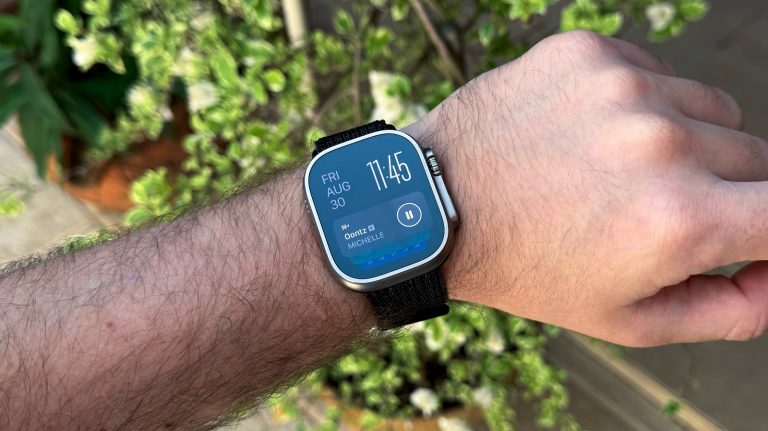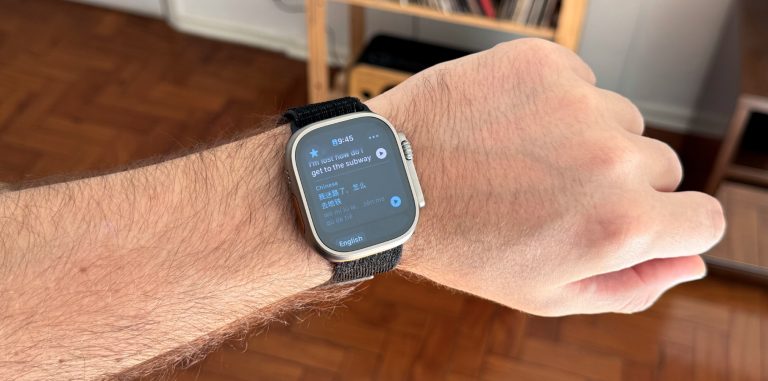Apple’s watchOS 11 update is just around the corner. After rebuilding the OS from the ground up with watchOS 10, the Apple Watch software adds new insights for health and fitness insights, along with even more personalization and connectivity.
In our watchOS 11 review, we discuss the good, the bad, and the in-between of Apple’s latest Apple Watch software update.
Smart Stack takes over Watch Faces

Smart Stack was first introduced with watchOS 10. At the time, it was a new interaction available below any Watch Face. By turning the Digital Crown, you’d reveal widgets in the Smart Stack, with multiple timers, calendar events, music playing, and more.
With this new software update, Smart Stacks got an important upgrade, and it’s our favorite watchOS 11 feature in this review. It now displays iPhone’s Live Activities and with machine learning, it’s always suggesting widgets you might be planning to use based on time, date, location, and daily routines.
For example, if you’re at a bar and a song is playing, you can open Smart Stacks, and it’ll be suggesting the Shazam icon. Or if you’re waiting for a DoorDash delivery, its Live Activity will appear there.
Sometimes, Smart Stacks take over your Watch Face – or at least it happened here for the most part of the beta testing. If that’s intentional, I’d say it’s usually more useful than using Watch Faces in general.
Wellbeing is a key part of watchOS 11

watchOS 11 introduces two important changes for Apple Watch users: A new Vitals app and Training Load feature. Vitals app gives users a way to quickly view these key health metrics and gain better context when it comes to their health.
This Apple Watch app (alongside insights from the Fitness app for iPhone users) helps you understand if you’re on a typical range or if you’re overreaching or missing too many workouts.
When two or more metrics are out of their typical range, users can receive a notification and a message detailing how changes in these specific metrics may be linked to other aspects of their lives, such as elevation changes, alcohol consumption, or even illness.

With Training Load, it measures how the intensity and duration of workouts impact a user’s body over time. Training load helps users understand the strain on their body from workouts over the last seven days compared to the last 28 days. Apple says these insights can help you prepare for an event, such as a marathon, bike race, or your first 5K, or just make informed decisions about your training each day.
While I praise these features, I still find them overcomplicated. I think it’s nice that Apple has finally paid attention to years of complaints, but the best way to understand how your workout and sleep are affecting you is with Gentler Streak.
That said, Apple offers a start for Apple Watch users to educate themselves on their wellbeing, but Gentler Streak takes the next step with easier to understand data and friendly user face.
Activity Rings have been rebuilt… finally!

The day has finally come, and Apple is once and for all letting users customize their Activity Rings with watchOS 11. Thanks to this change, the Activity Rings will understand planned rest days, injuries, or days off without affecting the award streak.
It’s also possible to customize Activity Ring goals by the day of the week, so your leg workout might be different from the one you go for an outdoor run.
Additionally, the Fitness app allows users to customize the Summary tab to show exactly the metrics they want to see, including their friends’.
These are all nice-to-have features, and can help you take a gentler approach with your fitness. After all, we all have been crazy about closing our rings, no matter what. Apple is finally letting us have a kinder approach to the Apple Watch. It only took 10 years, but it’s better late than never.
watchOS 11 has even more improvements

After covering the main changes of watchOS 11 in this review, there are still a few other features that might be useful to Apple Watch users in general, such as:
- New Photos Watch Faces: Apple rebuilt once again the Photos Watch Face. It now uses machine learning to make recommendations based on aesthetics, composition, and even facial expressions;
- Check In comes to Apple Watch: Introduced with iOS 17, users can now set a check-in when they finish a workout, so other people can be notified that the user is heading home after an early morning run or a late-night gym session;
- Translate app: Apple brings the Translate app to watchOS 11. Users can access translation for one of 20 supported languages directly on their wrist. Here’s why this is a game-changer app for Apple Watch;
- Double tap gesture improvements: It can now be used to scroll through any app, making it even easier to interact with Apple Watch with one hand;
- Nap detection: Apple Watch now detects when you sleep even when you’re not using Sleep Mode;
- Summarized notifications, powered by Apple Intelligence, will be forwarded from iPhone 15 Pro and iPhone 15 Pro Max to Apple Watch.
Device compatibility

Apple removed support for three Apple Watch models. That said, these are the wearables that will be able to run watchOS 11 starting September 16:
- Apple Watch Series 6 (2020)
- Apple Watch Series 7 (2021)
- Apple Watch SE (2022)
- Apple Watch Series 8 (2022)
- Apple Watch Ultra (2022)
- Apple Watch Series 9 (2023)
- Apple Watch Ultra 2 (2023)
- Apple Watch Series 10 (2024)
In addition to one of the smartwatches above, you must have an iPhone XR, iPhone XS, or newer running iOS 18 to fully enjoy an Apple Watch.
watchOS 11 review wrap up
watchOS 11 doesn’t reinvent the Apple Watch, but it brings nice-to-have features. Even though it might never get Apple Intelligence, it’s nice to see that Apple keeps improving this wearable as a well-being device. The Apple Watch has become a crucial part of my active life, and I’m glad I stuck to it for almost a decade now.
Below, you can learn more about watchOS 11.








